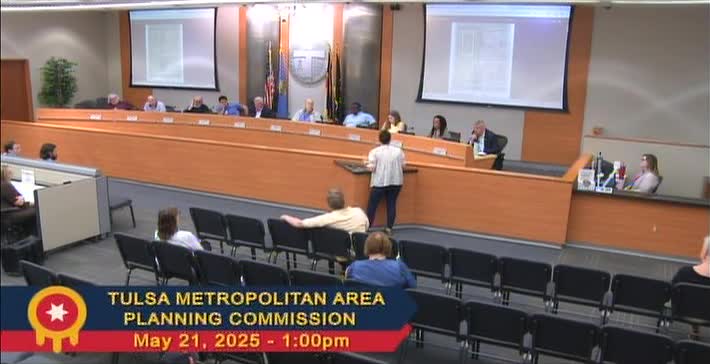Tulsa Planning Commission approves Florence Park neighborhood character overlay proposal
May 21, 2025 | Tulsa, Tulsa County, Oklahoma
Thanks to Scribe from Workplace AI , all articles about Oklahoma are free for you to enjoy throughout 2025!

This article was created by AI using a video recording of the meeting. It summarizes the key points discussed, but for full details and context, please refer to the video of the full meeting. Link to Full Meeting
The developer, Mr. Hensley, is seeking approval for a project that would expand from an initial plan of 90 lots to 107 lots. This increase is driven by economic factors, as the developer believes that a higher number of homes will make the project financially viable. The site, which is located in an area with existing flood plains, will include stormwater detention ponds to manage runoff and mitigate flooding risks. The commission discussed the importance of ensuring that the development meets city codes, particularly regarding infrastructure improvements, including the construction of public streets.
Commissioners expressed mixed feelings about the proposed increase in lots. While some acknowledged the need for more housing in Tulsa, others questioned whether the increase was necessary, suggesting that maintaining the original 90 lots might suffice. Ultimately, the commission voted in favor of the development, emphasizing the importance of adhering to the city’s comprehensive plan and ensuring that adequate facilities are in place to support the new homes.
In addition to the residential project, the commission also reviewed a preliminary plat for a townhome development known as the Q8 edition, which consists of six lots. This project is located near the historic Tulsa Boys Home, now an apartment complex, and is expected to proceed quickly through the approval process.
Another significant discussion centered on a zoning code amendment aimed at implementing a neighborhood character overlay for the Florence Park area. This initiative, driven by requests from the local neighborhood association, seeks to preserve the unique characteristics of the community, which features homes built in the 1920s. The proposed overlay would impose restrictions on building height, width, and garage placements to maintain the neighborhood's aesthetic and prevent the construction of oversized homes that could disrupt the area’s character.
The commission's decisions reflect a commitment to balancing development needs with community preservation, ensuring that new projects align with the values and expectations of Tulsa residents. As these developments move forward, they will play a crucial role in shaping the future of housing and community identity in Tulsa.
Converted from Tulsa - Tulsa Metropolitan Area Planning Commission - May 21, 2025 meeting on May 21, 2025
Link to Full Meeting
Comments
View full meeting
This article is based on a recent meeting—watch the full video and explore the complete transcript for deeper insights into the discussion.
View full meeting